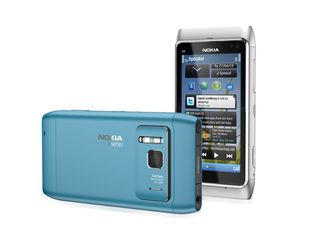
Gone are the days when an unexpected photo opportunity made you wish you'd packed a camera - you always have one on you. However, the poor quality of many mobile phone photos might put you off pointing and clicking.
It's not really the device's fault. Or, more accurately, it is its fault, but you're not compensating for its limitations. Mobile phone cameras have their foibles, but you can work around them. As you read on, we'll talk you through how to take better pictures possible with your phone.
Lets begin with the obvious question: when compact digital cameras are so small, why use your phone? Aside from the fact that it's always there, your phone has a couple of clear advantages.
For one, it's a phone, so no one notices when you take it out. Mobile phones are great for snapping candid action and getting pictures discreetly.
Secondly, your phone is well connected. When you've taken a picture, you can publish it almost instantaneously to blogs, Twitter, Facebook and other social media sites. A digital SLR like the Nikon D90 can take great photographs, but it can't publish them instantly. The result of this convenience and connectivity is that mobile phone cameras tend to have slow responses, poor resolution and awkward design features compared to dedicated cameras, but we can work around this.
Picture resolution
The picture resolution of modern mobile phones caught up with entry-level digital cameras a couple of years ago. It's now common for smartphones to boast camera resolutions between three and five megapixels. The iPhone 4 has a five-megapixel camera, for example, while users of LG's popular budget Android handset the Optimus One have three megapixels to play with.
Get daily insight, inspiration and deals in your inbox
Get the hottest deals available in your inbox plus news, reviews, opinion, analysis and more from the TechRadar team.
There are exceptions, like the relatively new Nokia N8. More like a camera with a phone built in, it boasts a 12-megapixel camera and professionally tooled Carl Zeiss lens for pin-sharp results.
What do these figures actually mean? You determine the megapixel count by multiplying the maximum number of horizontal pixels by the number of vertical pixels. For example, a three-megapixel camera has a maximum resolution of 2,048 x 1,536 pixels. Multiply those two figures and you have 3,145,728 pixels, or 3.1 megapixels.
However, you'll only get that full count if you select the highest resolution on your camera phone, which may not be the default setting. Your phone will probably have a 'Normal' setting that only uses a fraction of the camera's capabilities. You need to set it to the highest possible resolution (often labelled either 'Fine' or 'Superfine') to get the most from your mobile pictures.
On Android phones you'll see the resolution in width, height and megapixels. It's important to remember that higher resolution images take up more of your available storage space.
One way around that, if your phone supports it, is to upgrade your storage. Most Android and BlackBerry phones have additional media storage that uses Micro SD cards. This is easy to upgrade, because you can just buy a higher capacity card. A cheaper way to maximise your storage is to regularly transfer images from your phone, wipe the media from it and start again.
Fibres and dust will inevitably find their way onto your mobile phone's camera lens as it rattles around in your pocket. All it takes is a quick wipe with a clean tissue before you start to shoot to avoid the disappointment of images obscured by eyelashes and crumbs. Better still, try the lint-free cloth that came with your phone - the one you thought you'd never use.

And while we're on the subject of occlusion, the compact form factor of the average mobile phone is more suited to making calls than taking pictures. That makes it easier to ruin an image with a dangling strap or errant thumb in front of the lens. Double-check for obstructions before taking your shot.
